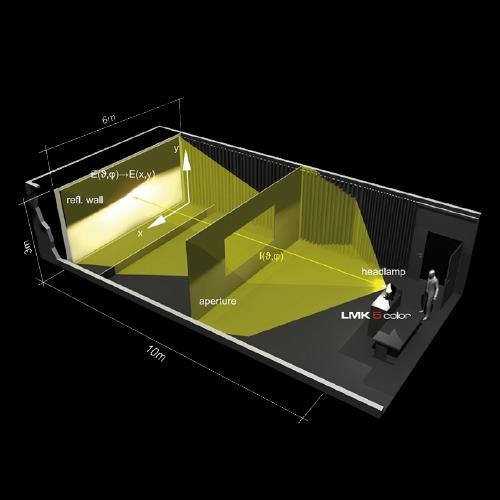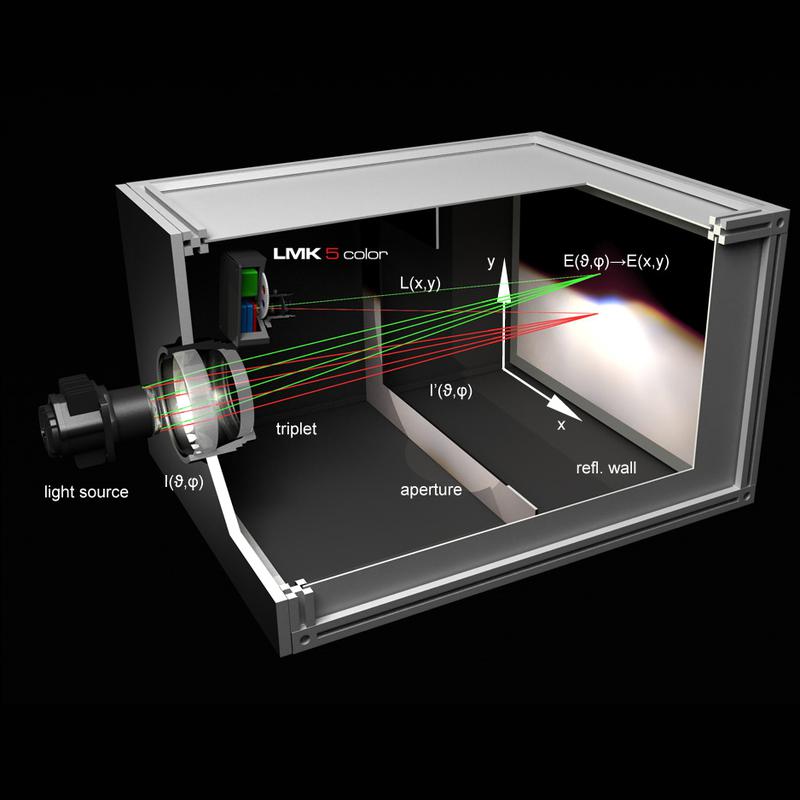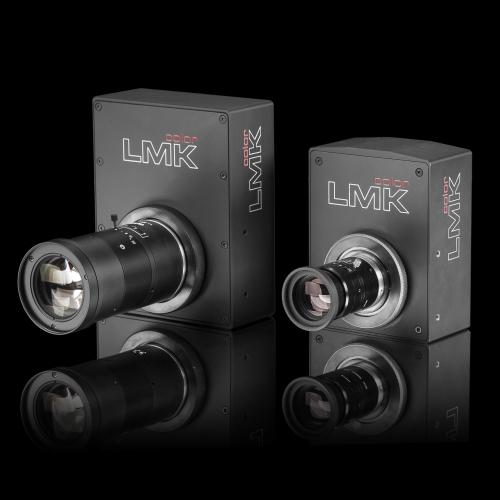Headlights and daytime running lights
See and be seen. This roughly covers the functionality of a headlamp. But is it really that simple? Nowadays, people are used to having light at night. Generating the targeted light needed for safe driving is already a significant technical challenge. In addition, efficiency and design are increasingly becoming the focus of attention. Here, not only the homogeneity of the luminous intensity distribution itself plays an essential role, but also the luminance distribution of the light-emitting surface on the headlights themselves.
Luminous intensity and illuminance distribution
Standardization institutes such as ECE, SAE, or CCC specify precise specifications for the safety-related testing of the light distribution of headlamps. This test has several objectives: to make the environment recognizable, minimize hazards, limit the glare of oncoming traffic, and create a safe lighting situation. These standards ensure that vehicles have adequate lighting that assists the driver and protects other road users.
Luminance uniformity measurements
The visual appearance of headlamps and daytime running lights is of interest for aesthetics and safety. The quality of the light-emitting surface depends on the human eye's perception. Measuring the luminance distribution using a luminance measurement camera as the LMK provides an objective result to evaluate different aspects of the headlamps, daytime running lights, and light sources, especially uniformity.
Color measurements
The color plays an essential role in the indirect light intensity measurement and the direct homogeneity assessment of the luminance distribution. On the road, e.g., along the cut-off line, color fringes are neither desirable nor permissible. All emitted light into the road space in front of the car has to be in the standardized white A range.
Even when looking into the dimming area of a headlamp, color gradients within the assemblies are irritating and unaesthetic.
Our solution
TechnoTeam has various LMK products that meet these requirements. This means that R&D and EOL measuring stations can be set up or expanded, which work 100 times faster than conventional scanning goniophotometers. In addition, TechnoTeam supplies a software add-on that directly provides the luminous intensity and illuminance distribution. In this way, our customers receive traced, high-resolution luminous intensity distributions, which can be further processed directly or, for example, exported as an *.ies file.
To meet the growing high geometric requirements of modern matrix or HD headlamps, TechnoTeam offers solutions with real resolutions of 0.005°. The stray-light-optimized systems can achieve the associated high local contrasts (SLK-add-on).
To break through the limitation of the size of the photometric screen, TechnoTeam offers the motor add-on to combine several automatically recorded individual images of the camera into one large result image.
For more information on each product and application, see the links below:










